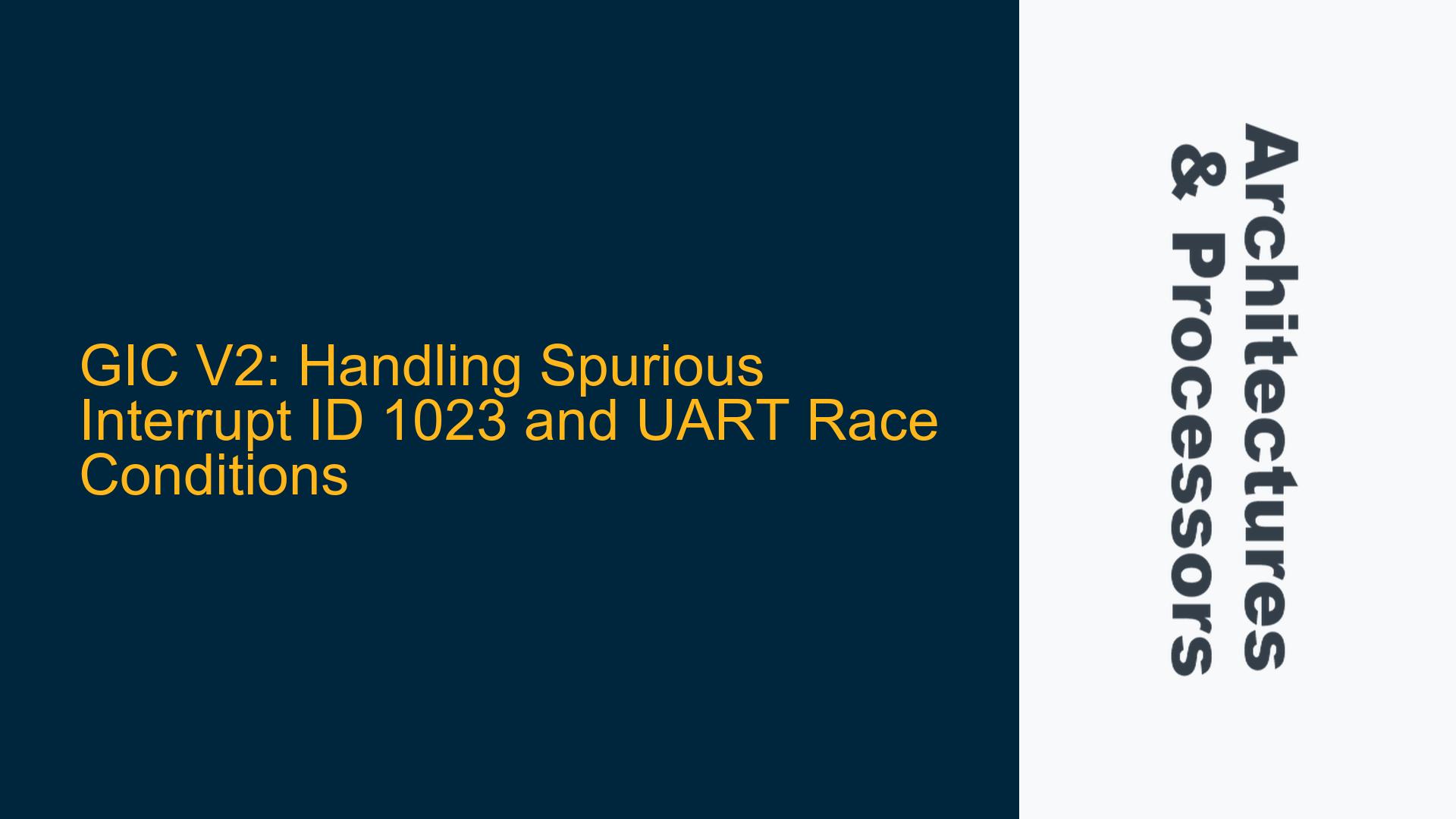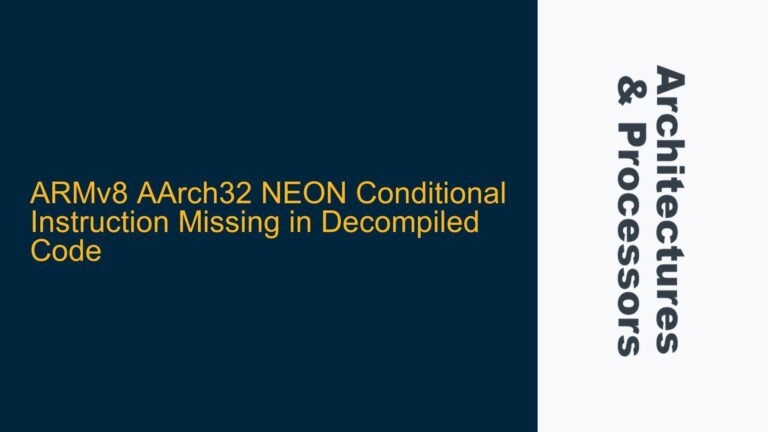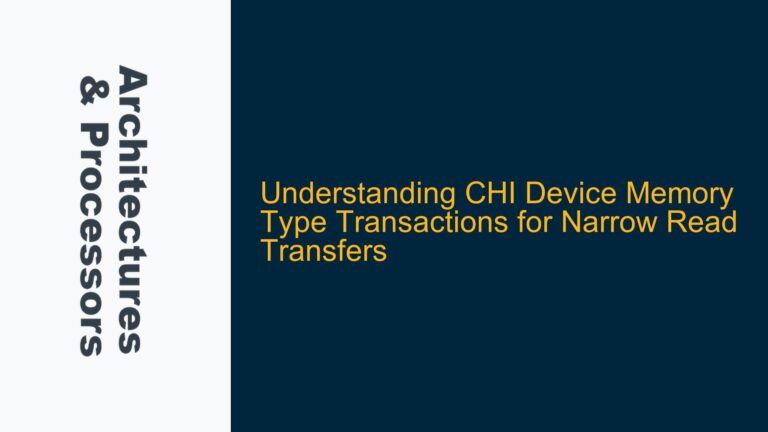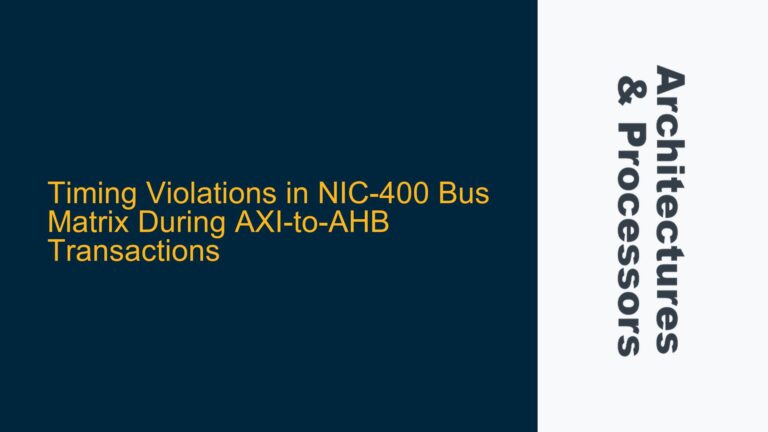GIC V2 Spurious Interrupt ID 1023 During UART Transmit Operations
The ARM Generic Interrupt Controller (GIC) Version 2 is a widely used interrupt management system in embedded systems, particularly in ARM-based microcontrollers and processors. One of the challenges developers face when working with the GIC V2 is the occurrence of spurious interrupts, specifically Interrupt ID 1023. This interrupt is defined as a spurious interrupt in the GIC V2 architecture specification and typically occurs when the GIC cannot determine the source of an interrupt. In the context of UART (Universal Asynchronous Receiver/Transmitter) operations, this issue can manifest during transmit routines, especially when the UART RX pin is left floating (not pulled high). This scenario can lead to a race condition, causing the Fast Interrupt Request (FIQ) to be continuously triggered, eventually leading to a watchdog timeout and system reboot.
The root cause of this issue lies in the interaction between the UART hardware, the GIC V2, and the system’s interrupt handling mechanism. When the UART TX Holding Register Empty event triggers an FIQ, the GIC V2 is responsible for managing and prioritizing the interrupt. However, if the UART RX pin is floating, it can introduce noise or undefined behavior into the system, which the GIC V2 may misinterpret as a valid interrupt source. Since the GIC V2 cannot definitively identify the source, it generates a spurious interrupt with ID 1023. This spurious interrupt, if not handled correctly, can lead to a race condition where the FIQ handler is invoked repeatedly, overwhelming the system and causing the watchdog to trigger a reboot.
To fully understand and resolve this issue, it is essential to delve into the specifics of the GIC V2 architecture, the UART hardware behavior, and the system’s interrupt handling mechanism. The following sections will provide a detailed analysis of the possible causes and offer comprehensive troubleshooting steps and solutions to mitigate the problem.
Floating UART RX Pin and GIC V2 Interrupt Source Identification
The primary cause of the spurious interrupt ID 1023 in this scenario is the floating UART RX pin. In most UART implementations, the RX pin is used to receive data from an external device. When the RX pin is not actively driven by an external signal, it is left in a high-impedance state, commonly referred to as "floating." A floating pin is susceptible to noise and can oscillate between high and low states due to electromagnetic interference or other environmental factors. This noise can be misinterpreted by the UART hardware as valid data or control signals, leading to unexpected behavior.
In the context of the GIC V2, the UART hardware generates an interrupt when the TX Holding Register is empty, indicating that the UART is ready to transmit more data. However, if the RX pin is floating, the UART hardware may also generate spurious interrupts due to the noise on the RX pin. These spurious interrupts are then reported to the GIC V2, which attempts to identify the source of the interrupt. Since the GIC V2 cannot definitively determine the source of the interrupt, it generates a spurious interrupt with ID 1023.
The race condition occurs when the FIQ handler is invoked repeatedly due to the continuous generation of spurious interrupts. This can overwhelm the system, as the FIQ handler may not be designed to handle such a high frequency of interrupts. As a result, the system may fail to perform other critical tasks, leading to a watchdog timeout and eventual reboot.
Another contributing factor to this issue is the lack of proper interrupt masking or prioritization in the GIC V2 configuration. If the UART interrupt is not properly masked or prioritized, the GIC V2 may not be able to effectively manage the interrupt flow, leading to the continuous invocation of the FIQ handler. Additionally, the absence of proper debouncing or filtering mechanisms for the UART RX pin can exacerbate the problem, as the noise on the floating pin can generate multiple spurious interrupts in quick succession.
Implementing UART RX Pin Pull-Up and GIC V2 Configuration Best Practices
To resolve the issue of spurious interrupt ID 1023 and prevent the associated race condition, it is essential to implement a combination of hardware and software solutions. These solutions should address the root cause of the problem, which is the floating UART RX pin, and ensure that the GIC V2 is properly configured to handle interrupts effectively.
Hardware Solutions: UART RX Pin Pull-Up and Noise Filtering
The first step in resolving this issue is to ensure that the UART RX pin is not left floating. This can be achieved by implementing a pull-up resistor on the RX pin. A pull-up resistor ensures that the RX pin is held at a logic high level when it is not actively driven by an external signal. This prevents the pin from oscillating due to noise and reduces the likelihood of spurious interrupts being generated by the UART hardware.
In addition to implementing a pull-up resistor, it is also advisable to add noise filtering mechanisms to the UART RX pin. This can be achieved using hardware filters such as RC (resistor-capacitor) networks or Schmitt triggers. These filters help to smooth out any noise on the RX pin, further reducing the likelihood of spurious interrupts.
Software Solutions: GIC V2 Configuration and Interrupt Handling
On the software side, it is crucial to ensure that the GIC V2 is properly configured to handle interrupts effectively. This includes setting appropriate interrupt priorities, masking unnecessary interrupts, and implementing proper interrupt handling routines.
Interrupt Prioritization and Masking
The GIC V2 allows for the prioritization of interrupts, ensuring that higher-priority interrupts are handled before lower-priority ones. In the context of UART operations, it is important to set the UART transmit interrupt to a higher priority than other non-critical interrupts. This ensures that the UART transmit interrupt is handled promptly, reducing the likelihood of a race condition.
Additionally, it is important to mask unnecessary interrupts in the GIC V2. This can be achieved by configuring the GIC V2’s interrupt mask registers to disable interrupts that are not required for the current operation. For example, if the UART receiver is not being used, the receiver interrupt should be masked to prevent it from generating spurious interrupts.
Interrupt Handling Routines
The FIQ handler should be designed to handle interrupts efficiently and avoid unnecessary processing. This includes quickly identifying and handling valid interrupts while ignoring spurious interrupts. In the case of spurious interrupt ID 1023, the FIQ handler should check the interrupt ID and immediately return if the ID is 1023. This prevents the handler from being invoked repeatedly due to spurious interrupts.
Additionally, the FIQ handler should implement proper debouncing mechanisms to handle any noise on the UART RX pin. This can be achieved by adding a delay or using a software filter to ignore rapid successive interrupts that may be caused by noise.
System-Level Solutions: Watchdog Timer Configuration
Finally, it is important to ensure that the system’s watchdog timer is properly configured to handle potential race conditions. The watchdog timer should be set to a reasonable timeout value that allows the system to recover from transient issues without triggering a reboot. Additionally, the watchdog timer should be periodically reset by the main application to prevent it from timing out due to prolonged interrupt handling.
Summary of Solutions
The following table summarizes the key solutions to prevent spurious interrupt ID 1023 and associated race conditions in GIC V2 and UART operations:
| Solution Category | Specific Solution | Description |
|---|---|---|
| Hardware | UART RX Pin Pull-Up | Implement a pull-up resistor on the UART RX pin to prevent floating. |
| Hardware | Noise Filtering | Add RC networks or Schmitt triggers to filter noise on the UART RX pin. |
| Software | Interrupt Prioritization | Set UART transmit interrupt to a higher priority in the GIC V2. |
| Software | Interrupt Masking | Mask unnecessary interrupts in the GIC V2, such as UART receiver interrupts. |
| Software | Efficient FIQ Handling | Implement FIQ handler to ignore spurious interrupt ID 1023. |
| Software | Debouncing Mechanisms | Add software debouncing to handle noise on the UART RX pin. |
| System-Level | Watchdog Timer Configuration | Set a reasonable watchdog timeout and periodically reset the timer. |
By implementing these solutions, developers can effectively mitigate the issue of spurious interrupt ID 1023 and prevent the associated race conditions in GIC V2 and UART operations. This ensures reliable and stable system performance, even in the presence of noise or other environmental factors that may affect the UART RX pin.






